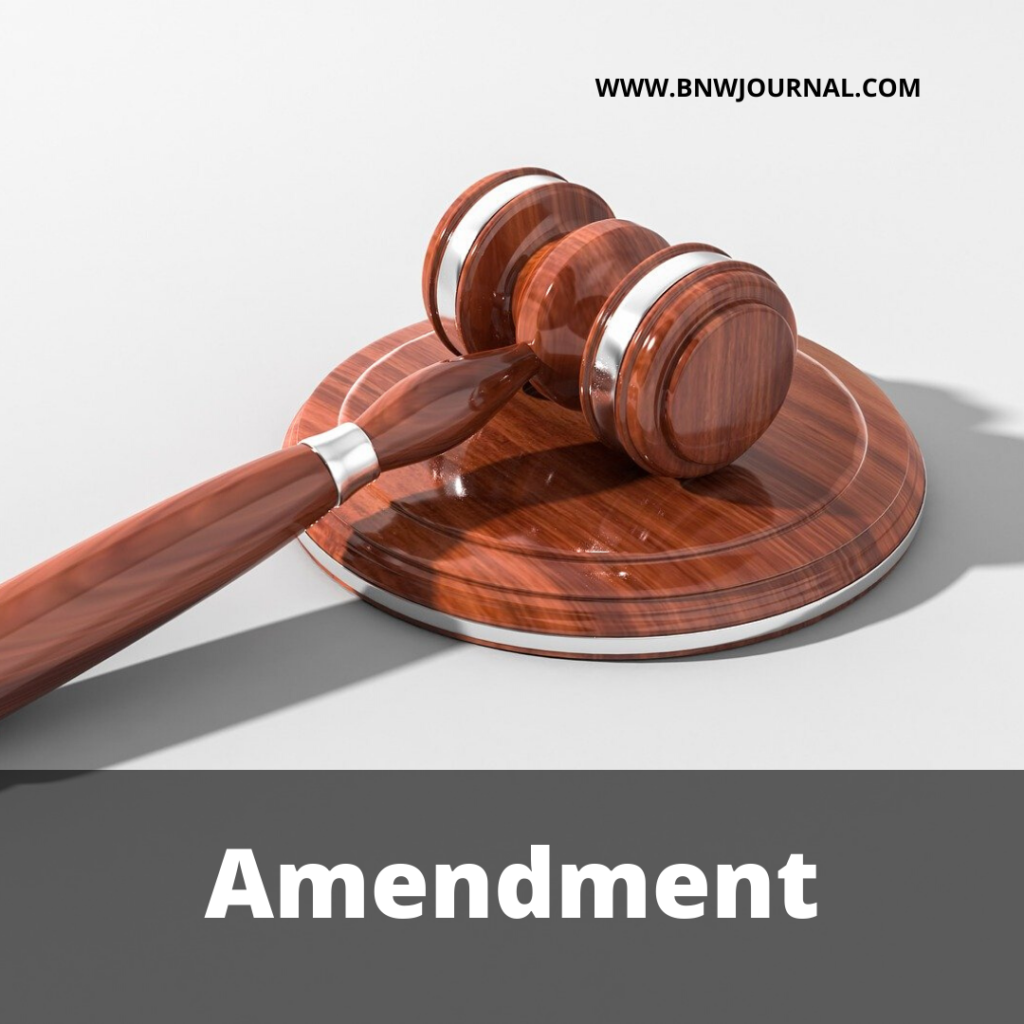![]()
Introduction
Article 368 of The Indian Constitution talks about the amendment. Amendment in its general term means bringing a change or amending some provisions of law. Constitution gives power to the parliament to amend the provisions as per the requirement of the time. Only the Union Parliament can introduce the bill for amendment. The bill introduced then should pass with a majority of the total members of the parliament, from each house of the parliament. After this, the bill should also be pass by a two-thirds majority of the people present and voting in both the houses. After the bill of amendment is pass by both the houses then it goes to the president for his approval. Once the president gives his approval, the amendment gets pass.
According to Article 13 of the Indian Constitution, the word law includes any ordinance, order, bye-law, rule, regulation, notification, custom, or usage having in the territory of India the force of law. This definition does not include the word amendment. Therefore amendment is a law or not was always a doubtful question.

Is amendment a law?
Sankari Prasad case-
The 1st Constitutional Amendment Act, 1951 added Article 31A and 31B IN The Indian Constitution. In the case of Sankari Prasad v. UOI, 1952[1] the First Constitutional Amendment Act was challenged. The court had to decide if the amendment is a law within the preview of Article 13 or not. The court says that there is a difference between ordinary law in exercise of legislative power and constitutional law in exercise of constitutional power. Hence it was held that Article 368 is not included in Article 13 as it is making changes in the supreme source of power that is the constitution. Therefore amendment was held to be not a law under Article 13 and Article 31A and 31B including the 9th schedule are constitutional.
Sajjan Singh v State of Rajasthan-
Again in the case of Sajjan Singh v. State of Rajasthan,[2] the 1st and 17th Constitutional Amendment Act was challenged. Courts, in this case, agreed to what was said in the case of Sankari Prasad v. UOI and affirmed it. But this is the first case when the basic structure concept was describe. J. Modholkar laid down the foundation of the basic structure doctrine by saying that the permanency of the basic structure should be maintained.
The I.C. Golaknath’s case view-
Later in the case of Golaknath v. State of Rajasthan[3] again the validity of 1st, 4th and 17th constitutional amendment was challenged. The majority held that these amendments are invalid. J. Subba Rao gave a prospective overruling and held that Article 368 does not contain the power to amend the constitution but only its procedure. He also said that amendment was a law within the meaning of Article 13 and it will be invalid or void only if it takes away the fundamental rights. Fundamental rights are godly and natural laws and hence can never be taken away. It was also says that amendment means only minor changes and does not mean addition, deletion or repeal. The power to make changes in the constitution can be invoke under residuary power of the parliament and a new constitutional assembly should be called for making any change or amendment in the constitution.
After the Golaknath case, 24th and 25th constitutional amendment was made. 24th constitutional amendment changes the structure of Article 368. 25th constitutional amendment said that Right to hold and acquire and dispose of the property under Article 19(1) (f) would not apply to laws concerning acquisition of property of the state under Article 31(2).
Doctrine of Basic structure
After all this came the landmark judgement of Kesavananda Bharti v. State of Kerala[4] which overruled the Golaknath judgement. It was held in the case that 24th, 25th and 29th are invalid. J. Khanna said that power to amend the constitution did not give any power to the parliament to replace the constitution with a new one. A bench of 13 judges was constitute and final judgement is in the ratio of 7:6. Out of all the 7 judges who gave the majority decision, 6 believed and established basic feature concept but J. Khanna talked about the basic structure doctrine and said that parliament can amend any part of the constitution including the fundamental rights in part III but such change or amendment must not destroy the basic structure of the Indian constitution.
This establish the basic structure doctrine and it was left on the courts to decide what features are the basic feature.
Conclusion
Therefore at present amendment is not a law under the preview of Article 13. Parliament can amend any part of the constitution to that extent that it does not destroy the basic structure of the Indian Constitution.
References:
[1] 1951 AIR 458, 1952 SCR 89
[2] 1965 AIR 845, 1965 SCR (1) 933
[3] 1967 AIR 1643, 1967 SCR (2) 762
[4] (1973) 4 SCC 225: AIR 1973 SC 1461



0 Comments